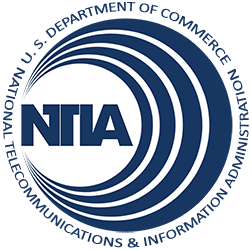Broadband’s ability to expand educational and employment opportunities is especially meaningful for Americans who are deaf or hard of hearing, a community that faces unique challenges in education and that suffers from a rate of unemployment much higher than the national average. Communication Service for the Deaf, Inc. (CSD) intends to expand broadband adoption among people who are deaf and hard of hearing and provide them with online tools to more fully participate in the digital economy. The project proposes to employ a combination of discounted broadband service and specialized computers, technology training from an online state-of-the art support center customized to the community’s needs, public access to videophones at anchor institutions from coast to coast, and a nationwide outreach initiative. Thousands will gain online access to all the Internet has to offer, including sign language interpreters, captioned video services, and other content and functionalities designed especially to advance their educational, employment, and healthcare interests.
North Dakota

| Grantee | Total Award | Type |
|---|---|---|
| Communication Service for the Deaf, Inc. | $14,988,657 | Sustainable Adoption |
| Dakota Carrier Network, LLC | $10,781,157 | Infrastructure |
| North Dakota Information Technology Department | $3,664,087 | Broadband Data & Development |
| University Corporation for Advanced Internet Development | $62,540,162 | Infrastructure |
Dakota Carrier Network's CCI Broadband project proposes to provide high-speed fiber connectivity to more than 175 largely rural and underserved North Dakota critical community anchor institutions, including public safety entities, schools, and government agencies. The project involves a unique combination of public and private partnerships and collaboration with multiple Round One Recovery Act broadband awardees to provide last mile service. Given the largely rural, underserved nature of the proposed service area, in which many community anchor organizations lack access to necessary last-mile broadband speeds, DCN intends to deploy 169 miles of new fiber with backhaul speeds as fast as 1 Gbps to enable last-mile service across the state. The project also proposes to enhance e-health in the state by deploying a dedicated 10 Gbps healthcare network for over 200 hospitals, clinics, and other healthcare providers to enable telemedicine, teleradiology, telepharmacy, and electronic health information exchange.
Project Components
State Broadband Capacity Building:
This funding will establish a state broadband program office to oversee the data collection and technical assistance projects, and also coordinate broadband planning activities across the state.
Technical Assistance:
In partnership with EduTech, which has been providing technical assistance to North Dakota’s schools for nearly twenty years, the North Dakota Information Technology Department will make broadband training subgrants available to local teams of adult education teachers and administrators. The subgrants will cover the cost of “train-the-trainer” training for the local team and will offset the cost for the local team to provide training to the other adult educator staff and faculty within that district.
Data Collection, Integration, and Validation:
This project was originally funded for broadband planning activities and two years of data collection. In September of 2010, this project was amended to extend data collection activities for an additional three years and to identify and implement best practices.
As part of a longstanding project to connect essential community anchor institutions across the country, and facilitate closer collaboration and long-term benefits for education, research, healthcare, public safety, and government services, the University Corporation for Advanced Internet Development (UCAID) proposes a comprehensive 50-state network benefitting approximately 121,000 community anchors. The project proposes a large-scale, public-private partnership to interconnect more than 30 existing research and education networks, creating a dedicated 100-200 Gbps nationwide fiber backbone with 3.2 terabits per second (TBps) total capacity that would enable advanced networking features such as IPv6 and video multicasting. The project plans to connect community anchors across all disciplines into virtual communities with shared goals and objectives, including colleges, universities, libraries, major veterans and other health care facilities, and public safety entities, with additional benefits to tribes, vulnerable populations, and government entities.
